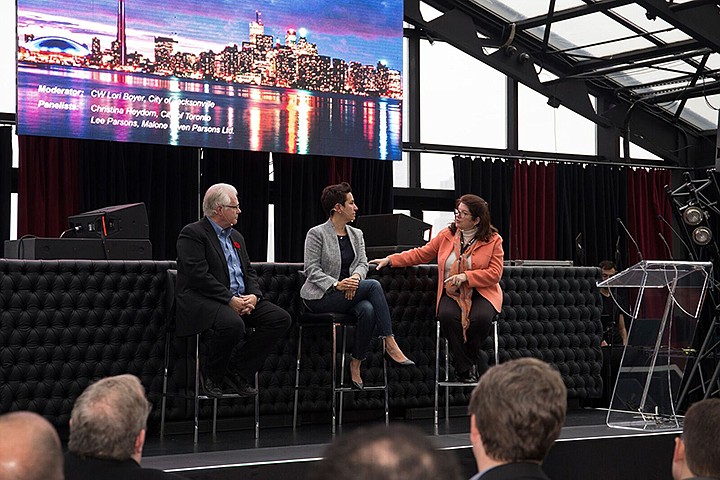
City Council President Anna Lopez Brosche said she was impressed with JAX Chamber’s 37th annual Leadership Trip to Toronto last week, praising the singular focus on downtown development.
“That was my sixth trip, and I can say without a doubt I took more away than in years past,” said Brosche, who represents At-Large Group 1.
JAX Chamber took 140 Jacksonville-area civic and business leaders back to Toronto for the first time since 1993, taking a different approach by focusing on the sole theme of Downtown development.
Eight Jacksonville government officials, including Mayor Lenny Curry and council members Greg Anderson, Aaron Bowman, Lori Boyer and Brosche, attended the event at a cost of $3,100 per person.
The city has not responded to a request for the full cost to taxpayers, although at least three council members attended by paying for themselves or in the capacity of their jobs outside of the council.
Brosche said previous trip agendas were too crammed, leaving attendees with little to no time to focus on what they meant to Jacksonville.
“By not trying to do every possible thing we could do in Toronto, it gave us space to discuss what was important for our city,” Brosche said.
Brosche said she appreciated that incoming chamber Chair John Peyton incorporated Jacksonville policymakers into the panel discussions and sessions. She said it gave Jacksonville’s Toronto counterparts insight into what was going on back in Florida.
“I think we’ve always assumed that people knew what was happening here, when indeed people had no idea,” she said.
She said from a “process” standpoint, Toronto officials were honest in explaining what worked and what didn’t, as Canada’s fourth-largest city continues a development boom that began about 15 years ago.
Brosche said it was encouraging to know Toronto faced some challenges Jacksonville currently is trying to solve, like activating the waterfront and enticing people to live and work Downtown.
“For me, it was a recognition that they, too, started from a place where we now sit and have made a tremendous amount of progress,” she said.
Waterfront activation is something Boyer has been particularly interested in during her two terms on council. As an attendee, she moderated a session on the topic.
“They’ve created some interesting activity along the water, and used that to spawn the residential development that followed behind it,” Boyer said.
Boyer said she was impressed with the amount of public space, both in scale and variety, for downtown Toronto residents.
She described several “pocket parks” Toronto has created along Lake Ontario as “innovative and doable in Jacksonville.”
One of those areas is Sugar Beach, a former surface parking lot the city converted into a 2-acre white sand beach lined with pink umbrellas and beach chairs. Another is Sherbourne Common, a two-block-wide greenspace, pavilion and splash park that conceals an underground stormwater facility.
“It was good to lay eyes on it, and see it in person, knowing we can do this here,” Boyer said. “Because these parks are very doable in the size spaces that we have available.”
Boyer echoed Brosche’s appreciation for Toronto officials who acknowledged that the city has run into a few setbacks.
“Two of those regrets is that they didn’t get enough active park space upfront from developers and that they didn’t get the public transit component installed before this development boom,” Boyer said.
She said as vice chair of the council Land Use and Zoning Committee, she’ll be spending more energy insisting developers stick to planning and zoning requirements that mandate minimum requirements for active public green space in their projects.
“I don’t think I would be doing my job as a council member if I didn’t uphold those standards,” Boyer said.
“Because right now in Toronto, they wish they would’ve.”